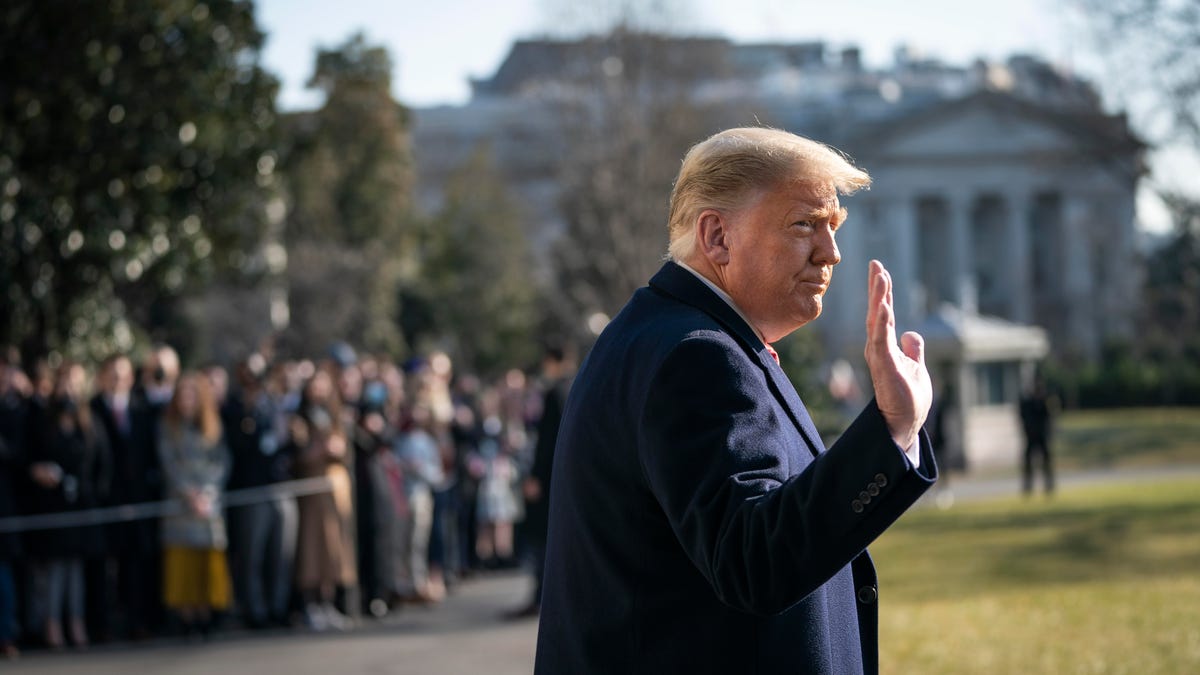14th Amendment is the cornerstone of Trump's impeachment. How it works, why it matters
What you need to know about how lawmakers are using the 14th Amendment to hold Trump and his political supporters accountable for the Jan. 6 riots on the US Capitol.

Why has the 14th Amendment entered the conversation?
Update, Feb. 9: Trump's second impeachment trial is happening now. Here's how to watch the hearing live.
Failing to remove President Donald Trump from office through the 25th Amendment, the House of Representatives impeached Trump for a second time Wednesday night after a heated debate. In a 232 to 197 vote, which included a historic 10 Republicans voting to impeach their party's president -- the House adopted an article of impeachment (PDF) that charged Trump with "incitement of insurrection" for his role in the Jan. 6 attack on the US Capitol.
The foundation of the article of impeachment is the 14th Amendment to the US Constitution, which the House used to justify its case again Trump. We'll explain exactly why below.
Since it's so close to the end of Trump's term (President-elect Joe Biden is inaugurated next week), Democrats and some Republicans hope to use the 14th Amendment as grounds for the Senate to convict Trump of causing the deadly riot, and further bar him from holding public office in the future. Trump has hinted at running for president again in 2024.
Here's how the 14th Amendment enters into the conversation.
Read more: Could Trump still try to pardon himself despite impeachment? What we know
What is the 14th Amendment and how does Trump's impeachment article use it?
The 14th Amendment -- added to the Constitution in 1866 -- has a total of five sections. Section 1, for example, says that anyone born or naturalized in the US are citizens in the state they live in.
But it's specifically Section 3 of the 14th Amendment that's been getting attention lately. In simple terms, Section 3 says that if a person has engaged in an "insurrection or rebellion" against the US, they cannot hold office.
Read more: FBI, DOJ provide update on Capitol riot arrests amid concern about future attacks
The full section reads:
No person shall be a Senator or Representative in Congress, or elector of President and Vice President, or hold any office, civil or military, under the United States, or under any state, who, having previously taken an oath, as a member of Congress, or as an officer of the United States, or as a member of any state legislature, or as an executive or judicial officer of any state, to support the Constitution of the United States, shall have engaged in insurrection or rebellion against the same, or given aid or comfort to the enemies thereof. But Congress may, by a vote of two-thirds of each House, remove such disability.
The House uses the 14th Amendment as the base of its case. "Further, section 3 of the 14th Amendment to the Constitution prohibits any person who has 'engaged in insurrection or rebellion against' the United States from 'hold[ing] any office . . . under the United States,'" the impeachment article (PDF) says.
See also
An image from the Jan. 6 attack on the US Capitol.
What it would take to enact the 14th Amendment
The 14th Amendment has never been used to oust a sitting president before, so is less in the conversation of removing Trump from office and more focused on preventing him from running for political office in the future. The Amendment also requires significantly less legwork than the 25th Amendment -- a simple majority in both chambers, but no vice-presidential support.
Since the 14th Amendment doesn't have language regarding removal, impeachment -- and a two-thirds majority of Senators voting to convict in a trial -- is how Trump would be removed from office. But with just a week left in office, it's unclear if a conviction without the additional disqualification from office would have much material effect.
Brian Kalt, a law professor at Michigan State University, told Reuters that the amendment's fifth section language suggests that taking action would require a mix of legislation and litigation.
Trump could potentially argue semantics, and that his comments are protected by the First Amendment, but this argument might not hold much water.
In short, Congress has the power to expel members, but it would have to come by way of legislation, in this case, the impeachment trial in the Senate, and a further vote to bar Trump from future office. The two-thirds majority required to convict would not progress without Republican support.
Has the 14th Amendment ever been used before?
Yes and no. In its infancy, the 14th Amendment was used to expel several lawmakers for supporting the Confederacy at the onset of the Civil War. Congress also invoked the 14th Amendment in 1919 to block elected official Victor Berger from joining the House after opposing US intervention in World War I.
While the Amendment hasn't been used to remove a sitting president, it has been a focal point in multiple Supreme Court cases throughout history. The 14th Amendment has been cited in racial injustice cases like Plessy v. Ferguson in 1896 and Brown v. Board of Education in 1954, as well as Bush v. Gore in 2000, in which former President George W. Bush's lawyers argued that recounting votes in Florida violated the amendment's Equal Protection Clause. More recently, the 14th Amendment was cited in Obergefell v. Hodges in 2015 by Justice Anthony Kennedy to argue in favor of gay marriage.

